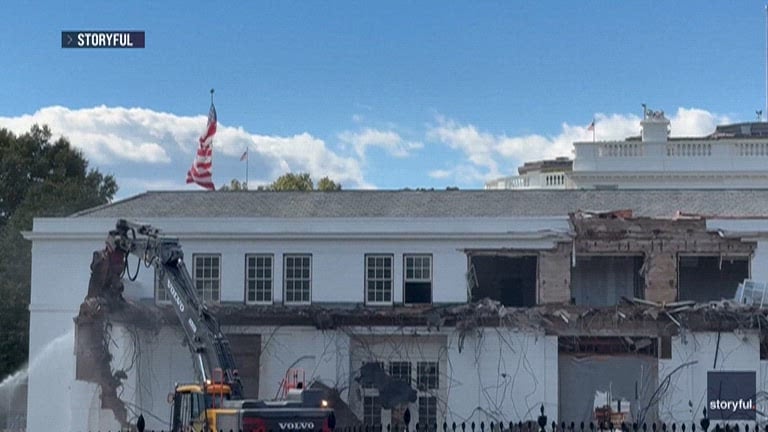White House renovation begins as Trump signs rare-earth deal and pressures Hamas over Gaza ceasefire
Crews began demolishing part of the White House’s historic east wing facade on Monday to clear space for a massive new ballroom.

(NBC)- Crews began demolishing part of the White House’s historic east wing facade on Monday to clear space for a massive new ballroom that President Trump has promoted as a way to host far more guests. “This was the ballroom, and this room holds 88 people. And the new one will hold 999 people,” the president said.
The White House says the estimated $250 million cost will be covered by the president and private donors, but the renovation marks a reversal of an earlier Trump pledge not to alter the original building — a move that has drawn sharp criticism from many Democratic lawmakers.
Inside the complex Monday, Trump and Australian Prime Minister Anthony Albanese signed a new agreement to invest billions in rare-earth minerals, strategic elements used in advanced electronics and defense technologies. “In about a year from now, we’ll have so much critical mineral and rare earths that you won’t know what to do with them,” the president said, framing the pact as part of an effort to counter China’s dominant role in extracting and processing these materials amid tense U.S.-China trade talks.
At the same time, Vice President J.D. Vance arrived in Israel to join efforts to maintain the fragile Gaza ceasefire after recent flare-ups. The president has stepped up pressure on Hamas to comply with the terms of the truce and disarm. “They’re going to behave, they’re going to be nice, and if they’re not, we’re going to go and we’re going to eradicate them,” Trump said, while stressing that such action would not include U.S. troops on the ground.
The package of developments — an ambitious and controversial domestic renovation, a high-stakes mineral pact with a key ally, and intensified diplomatic activity around Gaza — underscores the administration’s simultaneous focus on legacy projects, global supply-chain strategy, and volatile security flashpoints.



